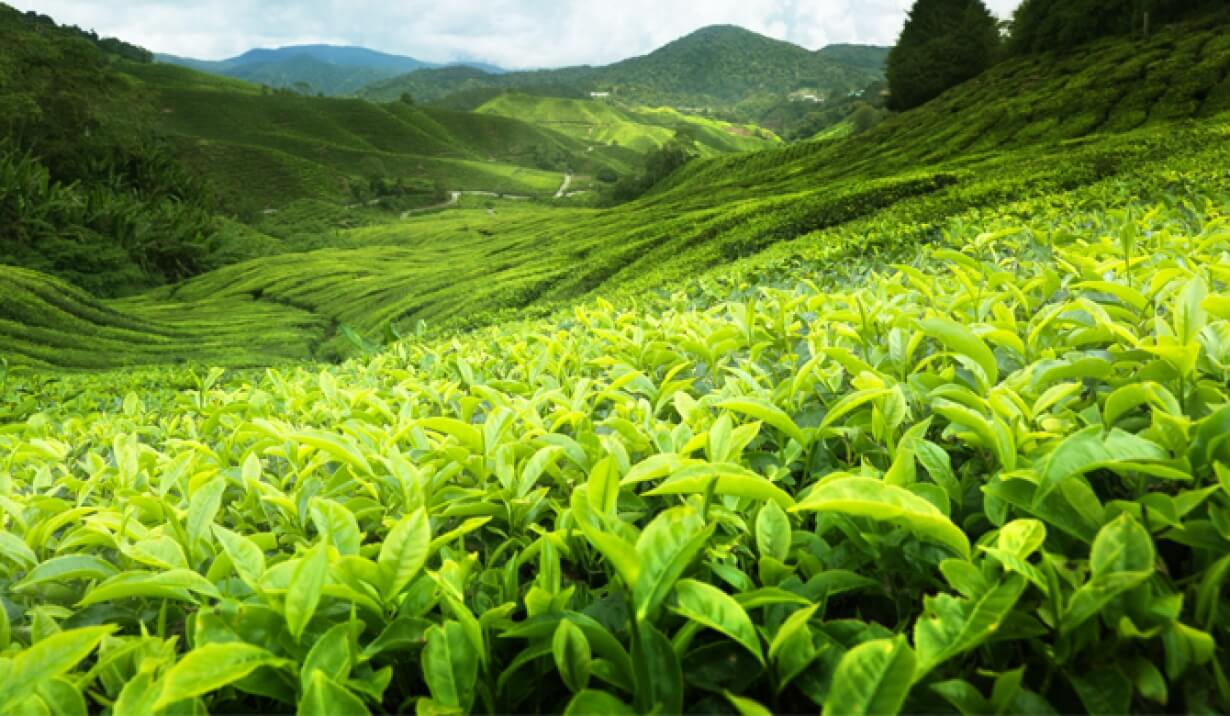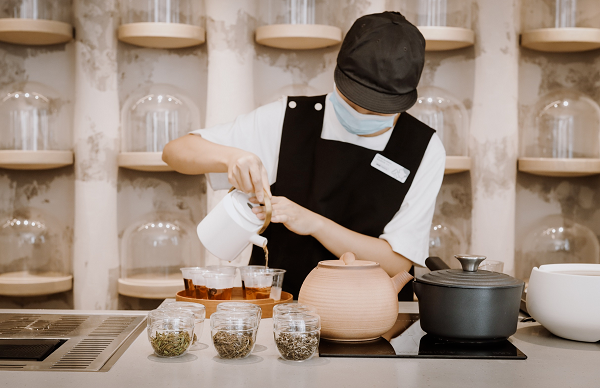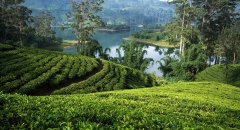Ceylon, formerly known as Ceylon, is famous for its black tea. Which Asian country now produces Ceylon black tea?
The tea industry in Sri Lanka has gone through a long process of nearly two centuries since the first tea tree was planted in the Royal Botanical Garden of Peradinia. Once commercialized, Ceylon tea soon became famous for its unique taste and high-quality raw materials. Ceylon tea is loved by tea lovers all over the world and meets the growing demand of the global tea market with a variety of varieties and tastes. Ceylon tea is also considered to be the cleanest tea in the world because it does not contain any artificial additives or harmful pesticides. Although most Ceylon tea estates are located in the middle of the country, climatic conditions and fertile soil provide the best environment for tea growth in the world, Ceylon tea cultivation has also expanded to the lower parts of Sri Lanka, creating a range of flavors. After picking, Ceylon tea is processed by traditional methods, that is, the leaves are withered, rolled up, oxidized and dried. Although all these teas go through a common process, a true tea gourmet may notice some different tastes of Ceylon tea. Although there are many varieties of Ceylon tea, including Ceylon black tea, Ceylon green tea, Ceylon white tea and so on, they are all grown from the leaves of the common plant tea tree. Despite all the upgrades that tea may face later, ordinary Ceylon tea sometimes has a different flavor, each with its own origin story. The main reason behind this difference is the "area" or the soil in which these plants grow. The tea country of Sri Lanka is divided into seven regions. The soil composition and climate of the region have created a variety of Ceylon tea with regional flavor, color and aroma. Kandi region has always played an important role in Sri Lanka's tea industry. As part of the mountain area, the climate is cool and the soil moisture is high. Candy is grown at elevations between 650m and 1300 m, or between 2000 and 4000 feet. Like other areas that followed, the taste of Kangti tea was affected by its growth height. A cup of Kangdi tea is lighter than other teas. Most of the estates in the area are located on the western slope of the mountains. The quality of their products is determined by the "Western quality season". This means that the best kanti tea is produced in the first quarter of the season. The size of the tea garden is inversely proportional to its altitude. Therefore, Kangti tea grown at high altitude has smaller leaves and more subtle taste than tea grown at low altitude. Tea at low elevations is bigger and more full-bodied. Kanti tea also comes in different grades and leaf grain sizes. The size of the leaves affects the intensity of brewing. Kanti tea has a bright brewing with a copper hue. Although it looks light in the cup, it has a strong taste. In addition to the cold climate, beautiful scenery and high altitude in Nuwara Eliya, Nuvalaelia is famous for its lush tea gardens. Except for the dry season, the climate is cold and humid and the rainfall is moderate. This unique terrain and climate together create the best quality and most famous tea in the world. Nuwara Eliya's tea gardens are 6128 feet above sea level, while most of them are in the shadow of Mount Pidurutalagala, the highest mountain in Sri Lanka. Nuwara Eliya tea has two seasons, in which the yield is the highest. They are "Eastern season" and "Western season". Nuwara Eliya tea leaves produce a yellowish-green hue when soaked, which is the lightest soaking in Ceylon tea varieties. Although the area is located in the very center of the mountains, the balance between its two main climatic seasons may vary from manor to manor. The purity and exquisite quality of Nuwara Eliya tea perfectly separates itself from the low-growing varieties. The high altitude of the area leads to the growth of a shrub whose leaves are smaller and orange. Like other tea varieties, Gaoshan tea has different grades. It is worth noting that the smaller the leaf particles of Nuwara Eliya tea, the stronger the taste and the less delicate the tea will be. Tea grown in Dimbula in the Timbra area between 3500 and 5000 feet above sea level can be classified as "high growth". The manor is foggy for most of the year. From May to September, the southwest monsoon moist the westward houses in the area. The "quality season" lasts from the beginning of the year to March or April, giving plants a chance to relax and provide cool, dry winds for the estate. This is also the season when Dinbura Manor produces the best products. In this season, the air is fresh and cool during the day. The land arrangement in this area leads to different microclimates and different flavors. Dingbra tea has the same characteristics to some extent. It produces a delicate golden-orange hue in the cup, with a unique freshness, leaving a clean taste in the mouth when drinking. Once smelled of Dingbra tea, its fragrant quality shares the notes of jasmine mixed with cypress. The higher the altitude at which the tea grows, the brighter the tea is. Tea from the Nanu-Oya division proves this. It has the same characteristics as Nuwara Eliya tea because it has the same growth height. Teas from other parts of the region, such as Dikota, are more full-bodied. Using the Uda Pussellawa area Udu Pussellawa is a sparsely populated small area that is fully committed to tea cultivation. It is located on the eastern slope of the hilly area between Uva and Kandy. Part of the uncultivated area of the area is occupied by Hakgala strict nature reserves. The Pussellawa area of Wuda is famous for its exotic plants and rare wildlife. Compared with the western plantation area, the climatic conditions of Wudu Puselnawa are very different. Most of the weather in the area comes from the northeast monsoon, which rains on the eastern slope of the mountains. The climate in Wuda Pussellawa is humid and foggy because it rains an average of 211 days a year in the Hagara area. It also enjoys winds from the southwest monsoon from June to September. The tea from this area is darker and pink in the cup, with a strong taste. The best tea here is produced in the eastern high-quality tea season from June to September. Next is the western season, where plants are affected by dry and cold conditions, which adds a little rose flavor to the tea. When there is heavy rain in the area, it produces darker, stronger tea. Tea grown in Wudupsalawa is also available in a variety of sizes. The Uva region is considered to be the most remote province in Sri Lanka, although Uwa is not far from Kandi and Nuvalairia. It is difficult to get to the area from the coastal area. It takes many steep and tortuous roads to reach the provincial capital, Badura. Although difficult to reach, tea from Uva shares its characteristics under the taste of Ceylon tea. Its mellow, smooth taste distinguishes it from other varieties. This variety is well known because it was the tea grown at Sir Thomas Lipton's Uva estate that convinced Americans to get into the habit of drinking tea. Compared with tea from other regions, the tea produced in this area has become darker because it has withered. Uva produces a wide variety of tea, including various leaflet grades and CTC varieties. The normal photosynthesis of tea trees is disrupted during the dry monsoon season (July-September). Hot days and cold nights lead to chemical changes that improve the taste and aroma of tea. Uva tea produced in this season has a spicy, slightly minty flavor, which is different from other seasons.

In the Ruhuna region around 1900, people paid more attention to the priority of tea cultivation, and plantations were opened at the foot of the mountains of the central countries. At that time, most of the plantations were British. At that time, the Ceylon planting Brotherhood was still practicing. This is a group that specializes in growing tea, rubber and other crops. In the 1970s, political and economic changes in the Middle East led to an increase in the demand for strong, black and seasoned tea in the international market. This makes Ruhua tea a kind of special tea. With the help of this growth, such as Huna remains one of the main tea producing areas in the country, followed by Sabala Gamuwa. Both provinces account for 60% of Sri Lanka's total tea production. Your huna tea garden is located at an altitude of 2000 feet. This is a low cultivated variety. The existing climatic conditions in the area prevent trees from accepting the full power of the southwest monsoon. Before tea was planted, most of the planting areas were occupied by spice growers. The soil in this area is fertile enough to grow any plantation. It helps tea trees grow rapidly and produce long and beautiful leaves that turn black when they wither. Last but not least, the Sabaragamuwa region is an area with fertile soil. Although it is famous for its unique gemstone and other gemstones, Sabalagmuwa is also the largest tea growing area in Sri Lanka. Political changes in the Middle East and the former Soviet Union inspired the prosperity of Sabalagamuwa tea cultivation, just as it did to scented tea. Sabaragamuwa tea is grown very low until the altitude rises from sea level to 2500 feet. The highest tea garden in the region is located below the boundary of the Sinhalaga Forest and Mountain Wilderness Reserve. These properties share the microclimatic conditions generated by tropical rain forests, cloud forests and the region's unique highland plains. Therefore, compared with the tea at low altitude in the same area, this kind of tea has different characteristics. The tea-growing area of Sabaragamuwa covers most of the southwestern part of the central mountains. The valley on the hillside is occupied by rivers, which is a perfect natural drainage system, and any excess water flows down from the mountain. Most of the water in these estates comes from the southwest monsoon. The manor of the southwest monsoon showers provides the atmosphere of a tropical rain forest, where it is hot and humid open, and humid and cool places are thickly covered. When Sabala Gamua tea is poured into the cup, it has similar characteristics to your huna tea. It is a dark yellowish brown with a reddish hue. But the aroma inspired by sweet caramel helps it distinguish it from other varieties.
Important Notice :
前街咖啡 FrontStreet Coffee has moved to new addredd:
FrontStreet Coffee Address: 315,Donghua East Road,GuangZhou
Tel:020 38364473
- Prev

Xi Tea hand-made Store launches 50 New products Xi Tea original Leaf Tea is it good to drink the six traditional Chinese teas?
Xi Cha, as one of the well-known new tea brands, has brought its own online celebrity since it was born. On September 19, Xi Tea opened the world's first handmade store in the ancient city of Nantou, Shenzhen. When it opened, it naturally attracted a large number of customers to wait in line to sign in. A handmade shop? Obviously, this is not the regular type of store that likes tea. However!
- Next

Where does pure Ceylon black tea come from? What are the benefits and side effects of drinking Ceylon black tea for a long time?
A cup of tea a day can keep you away from dementia, according to a recent study by assistant professor Feng Lei of psychological medicine at the National University of Singapore (NUS) Yong toilet Lin School of Medicine. A longitudinal study of 957 Chinese graduates over the age of 55 found that daily consumption of tea reduced the risk of cognitive decline in the elderly by 50%.
Related
- A complete list of coffee bean names and their meanings! What is Yejia Shefi coffee? Where is Mantelin coffee?
- What grade does Arida Manor Kaduai coffee beans belong to? What treatment is Arida ASD slow anaerobic sun exposure?
- The milk tea cup becomes smaller?! Overlord Tea Girl launches a new "Return to Yunnan" series
- Accused of selling counterfeit and high-priced coffee beans! Well-known boutique coffee brand "Oukelao" bowed and apologized!
- How to make espresso dumplings? Can I eat coffee and glutinous rice balls together?
- Save the unformed and stagnant powder cakes in one second! What is the problem with stagnant water in the powder bowl of the espresso machine?
- What does hand-brewed coffee stop mean? Why is it not recommended to make coffee by hand?
- Is it normal to smell like coffee? Why does coffee smell like alcohol? What's wrong with the strong smell of cold extract ice dripping ice brewed coffee?
- How to solve the problem that hand-brewed coffee extraction takes too long? Why is the water flowing so slowly when making coffee?
- The main points of making Australian white coffee, the proportion details, how does Australian white properly foam and blend the flowers?

